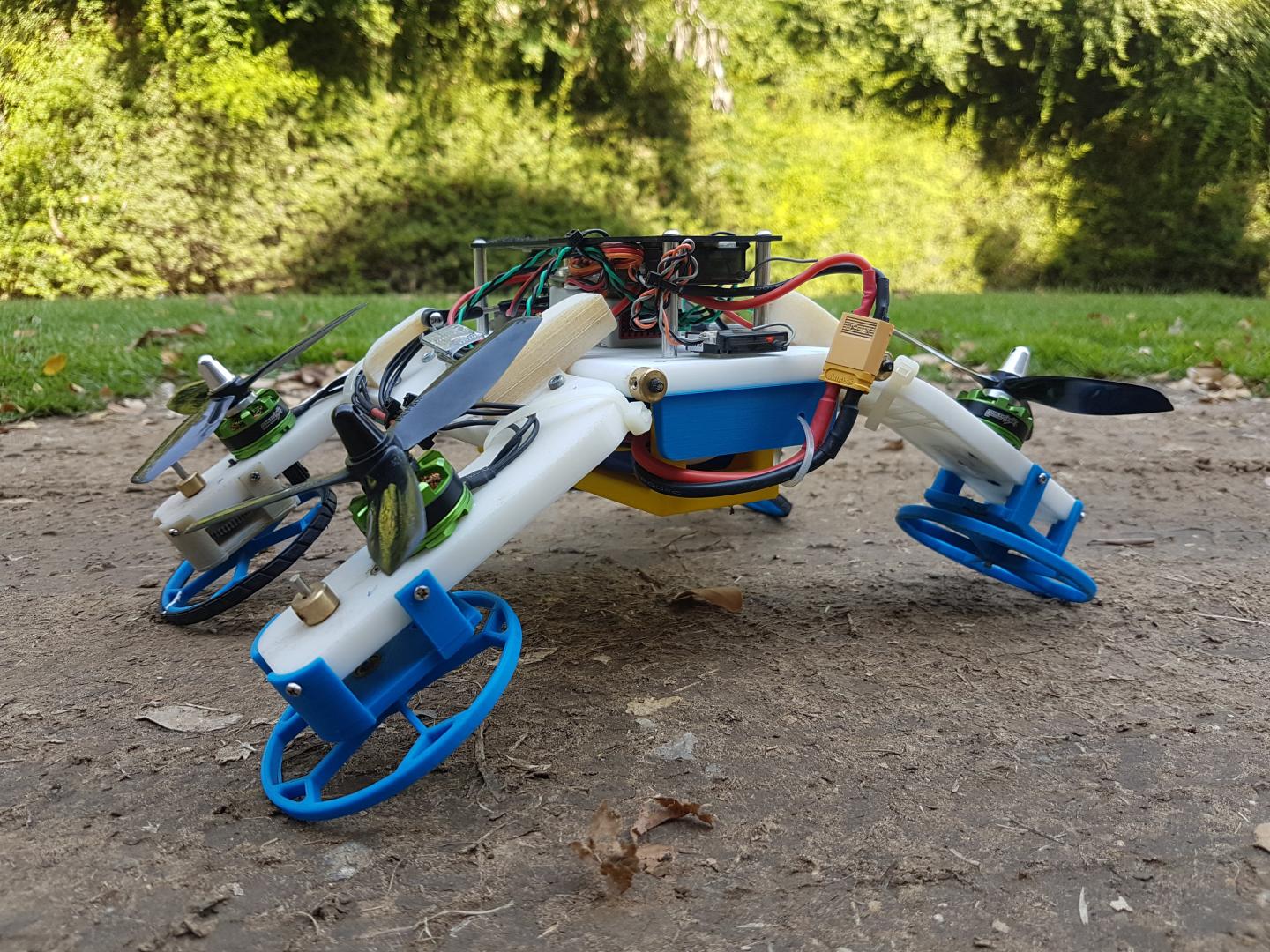
A hybrid robot drone that can transform from a conventional flying quadcopter into a mini robotic vehicle that can drive on rugged terrain could be the prototype for future delivery robots.
Developed by engineers at the Ben-Gurion University of the Negev (BGU) Bio-Inspired and Medical Robotics Lab, the robot is capable of reshaping itself to fit into tight spaces, and can rapidly transition from flying to driving as needed.

Access deeper industry intelligence
Experience unmatched clarity with a single platform that combines unique data, AI, and human expertise.
Dubbed FSTAR (flying sprawl-tuned autonomous robot), the hybrid robot drone is designed to fly like a conventional quadcopter but immediately begin driving when it lands, at speeds of up to 2.6m a second.
This gives it superior obstacle avoidance abilities compared to ground-based delivery robots or air-based drones, as it can either fly above or drive under or around any obstacles it encounters.
Are hybrid robot drones the future of deliveries?
FSTAR is at present a prototype, which will be showcased tomorrow at the International Conference on Robotics and Automation 2019 in Montreal, Canada. However, its creators believe it has significant potential for package deliveries.
In the future, such designs could fly to the target location before driving to the customer’s front door, removing the need for dedicated drone ports where users would need to go to collect packages.

US Tariffs are shifting - will you react or anticipate?
Don’t let policy changes catch you off guard. Stay proactive with real-time data and expert analysis.
By GlobalDataThe engineers also see applications in areas as diverse as agriculture, filming, maintenance and law enforcement, all of which are beginning to make use of drones.
However, for this to happen, more work will need to be done to ensure that the hybrid robot drone can be used in real-world applications. And as part of this, the engineers plan to develop a family of hybrid robots of different sizes, allowing them to be used effectively for a wider range of applications.
“We plan to develop larger and smaller versions to expand this family of sprawling robots for different applications, as well as algorithms that will help exploit speed and cost of transport for these flying/driving robot,” explained Professor David Zarrouk, senior lecturer in BGU’s Department of Mechanical Engineering, and head of the Bio-Inspired and Medical Robotics Lab.
Read more: FedEx delivery robot sees courier giant join the last-mile automation race







